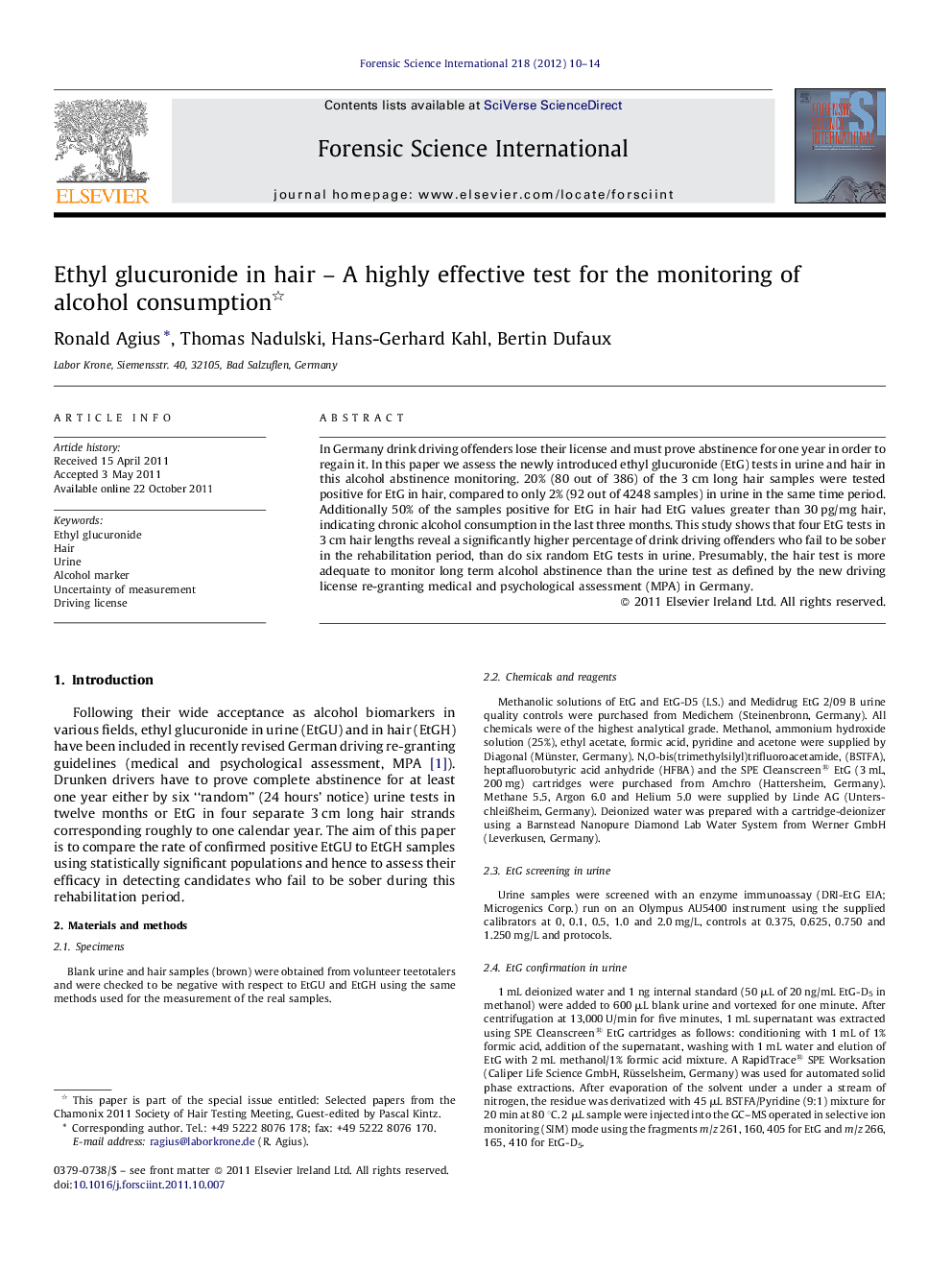| Article ID | Journal | Published Year | Pages | File Type |
|---|---|---|---|---|
| 96123 | Forensic Science International | 2012 | 5 Pages |
In Germany drink driving offenders lose their license and must prove abstinence for one year in order to regain it. In this paper we assess the newly introduced ethyl glucuronide (EtG) tests in urine and hair in this alcohol abstinence monitoring. 20% (80 out of 386) of the 3 cm long hair samples were tested positive for EtG in hair, compared to only 2% (92 out of 4248 samples) in urine in the same time period. Additionally 50% of the samples positive for EtG in hair had EtG values greater than 30 pg/mg hair, indicating chronic alcohol consumption in the last three months. This study shows that four EtG tests in 3 cm hair lengths reveal a significantly higher percentage of drink driving offenders who fail to be sober in the rehabilitation period, than do six random EtG tests in urine. Presumably, the hair test is more adequate to monitor long term alcohol abstinence than the urine test as defined by the new driving license re-granting medical and psychological assessment (MPA) in Germany.
